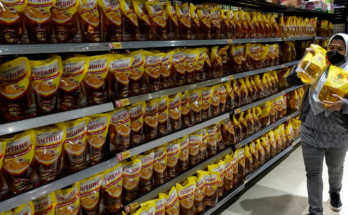LONDON (Reuters) -Remittances to low and middle-income countries from citizens working abroad held up unexpectedly well in 2020, outstripping combined foreign direct investments and overseas development aid, a World Bank report showed on Wednesday.
They fell just 1.6% to $540 billion, the report said, supported by fiscal stimulus in countries hosting migrant workers, a shift in flows from cash to digital and, with fewer people travelling due to the coronavirus pandemic, more money sent via formal instead of in-person channels.
A year ago, the Bank envisaged a fall in migrant wages and employment overseas and forecast a drop of around 20% in what has become an increasingly vital source of funds as governments and families in poorer countries have struggled to bear the pandemic’s financial cost.
“The resilience of … flows is remarkable. Remittances are helping to meet families’ increased need for livelihood support,” said Dilip Ratha, lead author of the report.
By contrast, FDI to low and middle-income countries, excluding China, sank by more than 30% in 2020, the report said.
The Bank forecast that remittances, which slid 4.8% during the 2009 financial crisis, would rise 2.6% in 2021 and 2.2% in 2022, buoyed by an expected rebound in global growth.
But it said that although many high-income nations had made significant progress in vaccinating their populations, still high coronavirus infection rates in developing states made the outlook for remittances uncertain.
Flows to India could spike even higher in 2021 as people send money back to their families in the wake of the latest coronavirus surge, Ratha told Reuters.
India, which has been the largest recipient of remittances by country in the world since 2008, attracted $83 billion in flows in 2020, he said.
“Non-resident Indians are sending help, mostly oxygen cylinders and money, from every country in the world,” he said.
India accounts for half of COVID-19 cases and 30% of deaths worldwide, the World Health Organization said in its latest weekly report.
Remittance inflows growth during 2020 was strongest in Latin America and the Caribbean, up 6.5%, while it fell in East Asia and the Pacific, Europe and Central Asia and Sub-Saharan Africa – including a 28% slump into Nigeria, gripped by currency woes after a fall in oil prices.
The World Bank said it believed the true size of remittances including informal flows was larger than officially reported, and called for better collection of data.
editing by John Stonestreet and Giles Elgood



